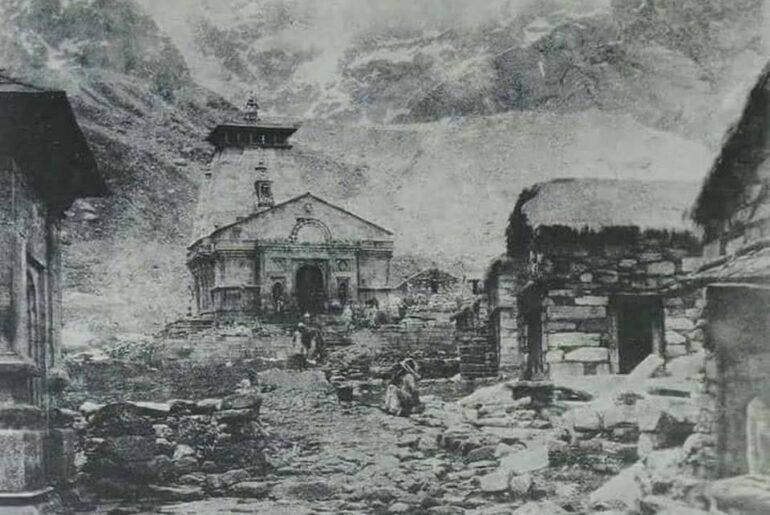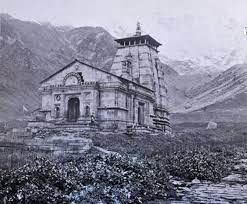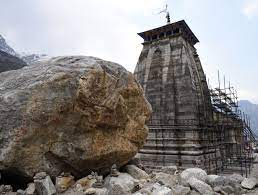Kedarnath Temple Enchanting History

Kedarnath Temple’s history is a tapestry of devotion, tenacity, and veneration for Lord Shiva. This ancient shrine has weathered the test of time, exemplifying the unbreakable tie between people and the divine, from its legendary roots to its enduring spiritual significance. As the Kedarnath Temple stands tall among the beautiful Himalayas, it serves as a beacon of hope, attracting pilgrims and seekers of inner peace to its hallowed grounds. The venerated Kedarnath Temple stands as a tribute to ageless devotion and spiritual significance, nestled among the majestic peaks of the Garhwal Himalayas in Uttarakhand, India. With a centuries-long history, Lord Shiva’s sacred dwelling has captured pilgrims and history buffs alike, luring them into its mystical aura. Let us travel back in time to discover the fascinating history of the old Kedarnath Temple.

The Mythical Origins:
According to Hindu tradition, the Kedarnath Temple dates back to the Mahabharata period. It is claimed that following the great Kurukshetra war, the Pandava brothers sought penance for their misdeeds and the blessings of Lord Shiva in order to be saved. Lord Shiva, however, was dissatisfied with their conduct and eluded them by assuming the form of a bull. Shiva eventually reappeared at Kedarnath, and the Pandavas built the temple on the location where he was discovered.
The Construction and Reconstruction:
According to historical records, the first Kedarnath Temple was established by Adi Shankaracharya, a prominent 8th-century philosopher and theologian. He is credited with founding the famed Char Dham pilgrimage circuit, of which Kedarnath Temple is one of the most important destinations. Due to natural disasters and the passage of time, the temple has undergone various modifications and reconstructions over the years.

The Devastating Flood of 2013:

One of the most difficult periods in the temple’s history happened in 2013, when Uttarakhand experienced terrible floods and landslides. The region experienced exceptional rains, resulting in widespread devastation. Many adjacent structures, including the temple, were severely destroyed. The flood took many lives and had a long-term impact on the area. However, thanks to the perseverance and commitment of numerous individuals, the temple was rebuilt, symbolising the unbreakable spirit of devotion.
Also Read :- 10 Best Places To Visit In Mandi Himachal Pradesh 2023
Architectural Marvel and Spiritual Significance:
The Kedarnath Temple’s architectural style is a mix of old North Indian and Garhwal architectural features. The unique carvings and design of the temple, which is entirely made of stone, demonstrate excellent craftsmanship. The main shrine, which houses the sacred Shiva Lingam, emanates a divine air that draws pilgrims from all over the world. The temple complex also features shrines to deities such as Goddess Parvati, Lord Ganesh, and Lord Bhairava.
The Annual Yatra and Pilgrimage:
Every year, during the summer months, the Kedarnath Temple opens its doors to worshippers, signalling the start of the Char Dham Yatra. Pilgrims from all over the world embark on a perilous yet spiritually rewarding trip to seek blessings and spiritual consolation. The journey to Kedarnath Temple is regarded as one of Hinduism’s most sacred and difficult pilgrimages, drawing millions of worshippers who face physical challenges in their pursuit of heavenly grace.
Also Read :-Panchvaktra Temple, Mandi
What is the story behind Kedarnath Temple?
After the Mahabharata, the Pandavas built the Kedarnath temple, according to legend. It is stated that after killing their Kaurav brothers to atone for their transgressions, the Pandavas sought pardon from Lord Shiva. But Lord Shiva refused to meet with them. That is why Lord Shiva took refuge in Guptkashi.
Who built Kedarnath Temple?
Jagad Guru Adi Shankaracharya
The Temple at Kedarnath presents an imposing sight, standing in middle of a wide plateau surrounded by lofty snow covered peaks. The temple was originally built in 8th century A.D. by Jagad Guru Adi Shankaracharya and stands adjacent to site of an even earlier temple built by the Pandavas.
Is Kedarnath story true?
Though the historical story of Kedarnath is not based on any two people, the natural disaster that serves as the backdrop is extremely real.
Was Kedarnath Temple under snow for 400 years?
As per the geologists, Kedarnath was under snow for nearly 400 years, and it remains intact. The Little Ice Age took place around 1300-1900 AD, and the temple still shows evidence of several yellow lines beckoning the glacial activity.
Why is Kedarnath Shivling different?
The Kedarnath Shivling is unique in that it is believed to be constantly increasing in size. According to legend, the Shivling was initially only the size of a thumb, but over time it has grown to its current size of around 4 feet.
What is the story of Shivling in Kedarnath?
The legend behind this famous place of worship is that after the Mahabharata war, the Pandavas performed a penance to purge their sins – of killing their kin. In order to be able to do this, they were advised to seek Lord Shiva’s pardon.
Which rock saved Kedarnath?
Bhim Shila
One of the most significant calamities occurred at Kedarnath in 2013 when it was affected by flash floods, which was one of the worst disasters that occurred in 100 years of its existence. Bhim Shila stands for ‘God’s rock’, which saved the holy temple of Kedarnath from being washed away by the turbulent flood water.
Who protects Kedarnath Temple?
Bhairavnath Ji Temple
It is said the temple of Kedarnath is protected by Bhairavnath Ji Temple as he is the temple guardian. Lord Bhairavnath Ji is a very important god in the region of Garhwal. He is the lord of protection and justice.
Which part of Shiva is in Kedarnath?
It is said the each of these sites is dedicated to a part of the Lord – Kedarnath (the hump of Lord Shiva), Madhmaheshwar (His belly button), Tungnath (His arms), Rudranath (His face), Kalpeshwar (His jata or hair).
How much old is Kedarnath?
Legend has it that the original Pandavas built the temple of Kedarnath and the present temple was established by Adi Shankaracharya, who restored the glory of the shrine in the 8th century A.D. The temple is said to be more than 1,200 years old and one among the 12 jyotirlingas in India.
